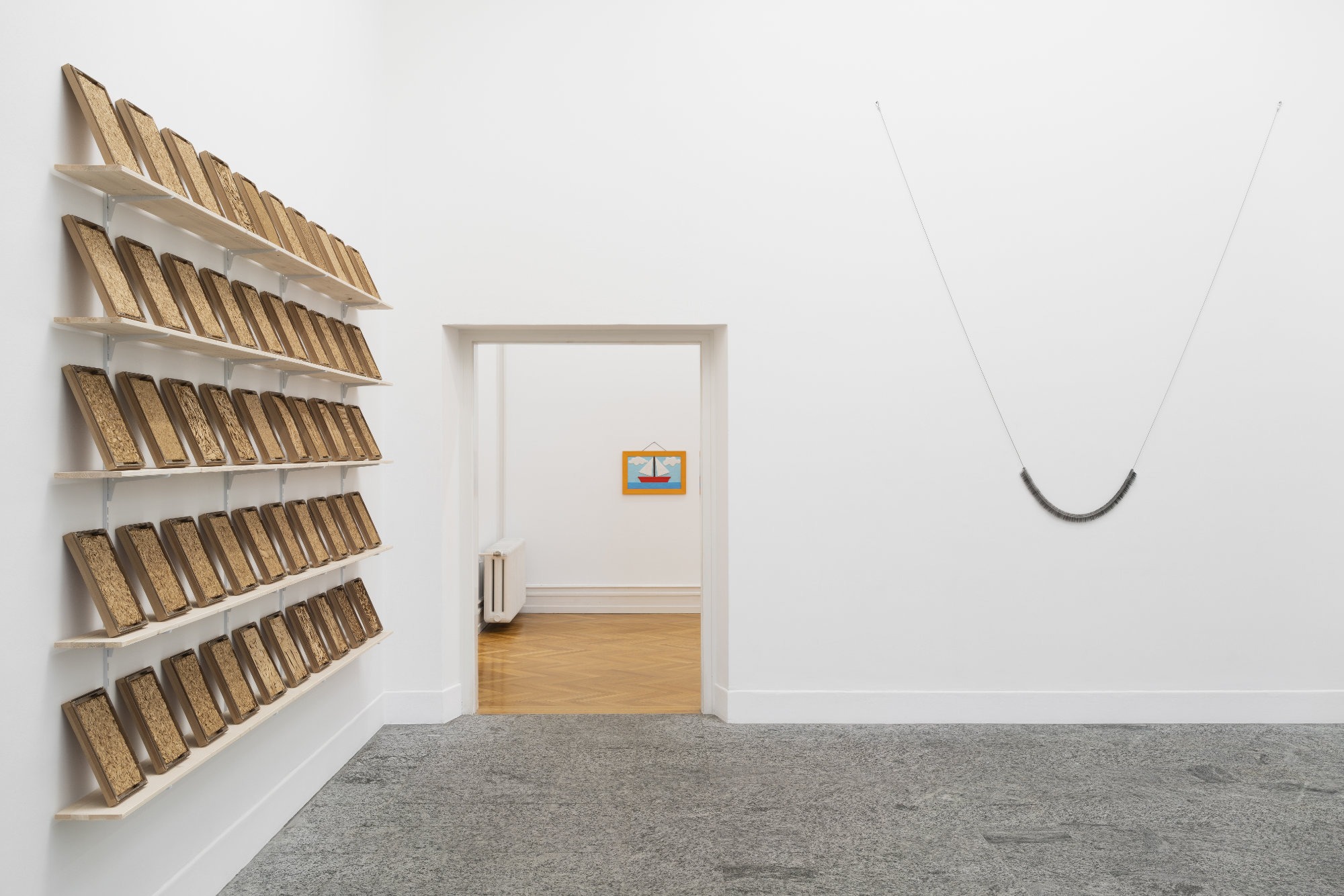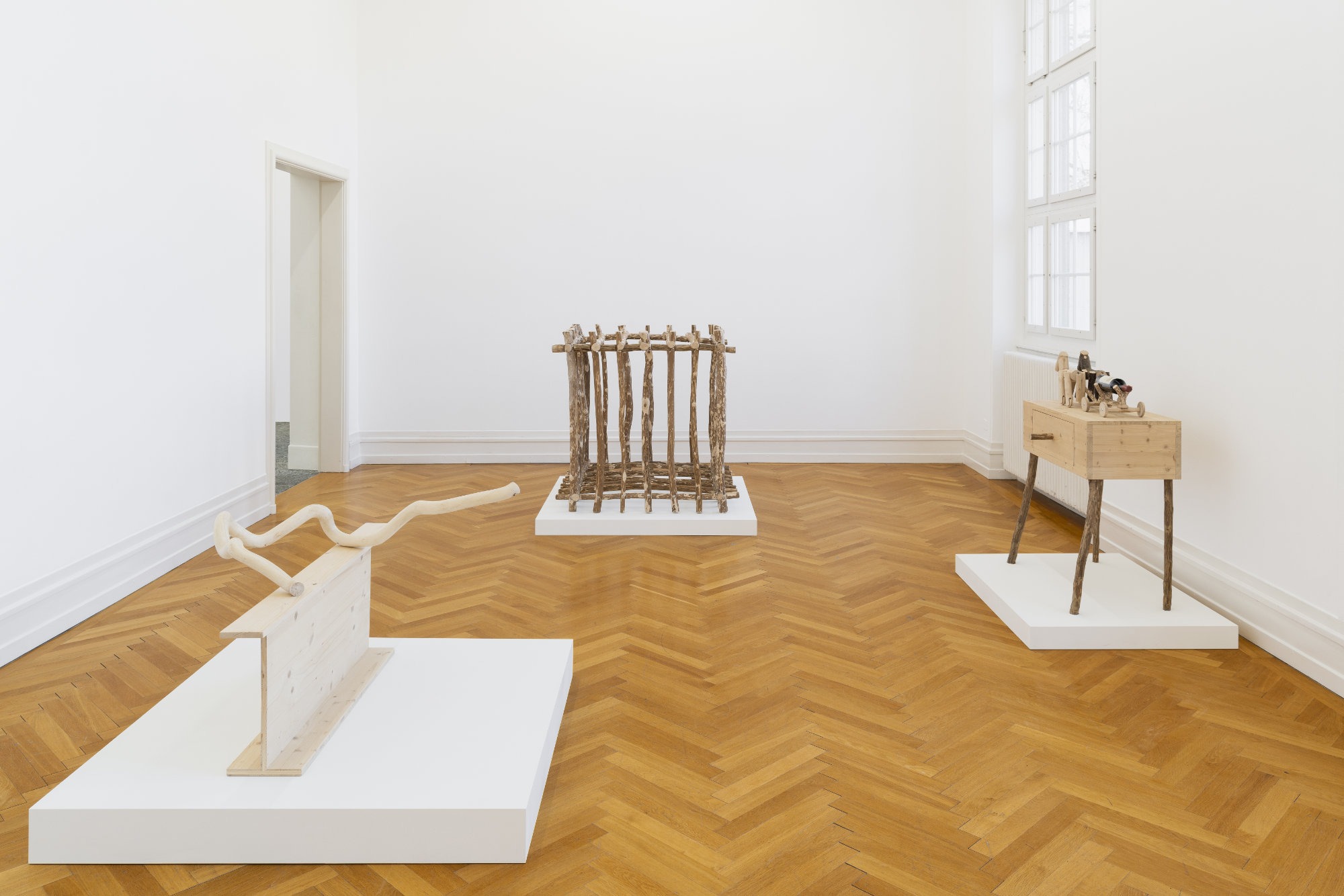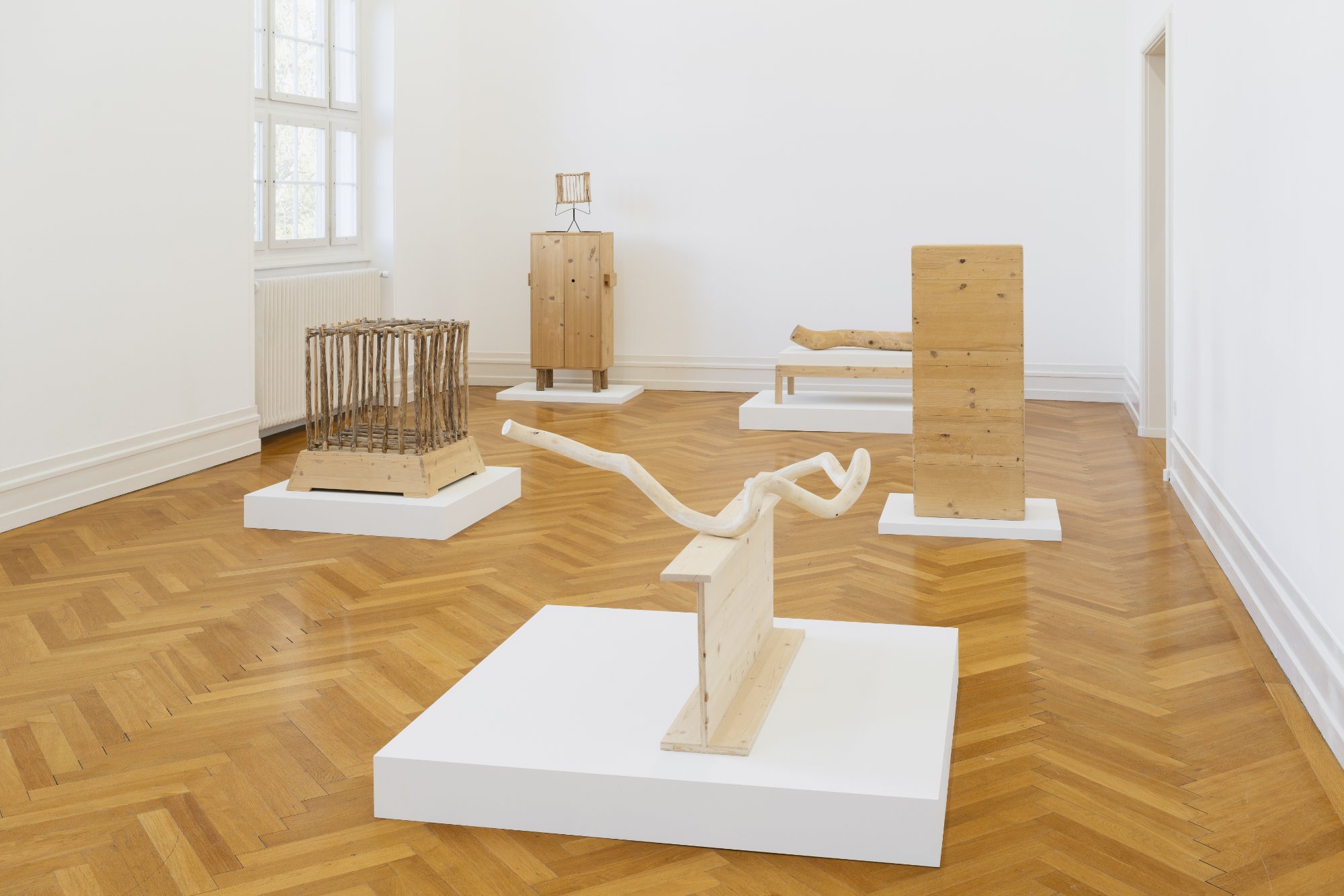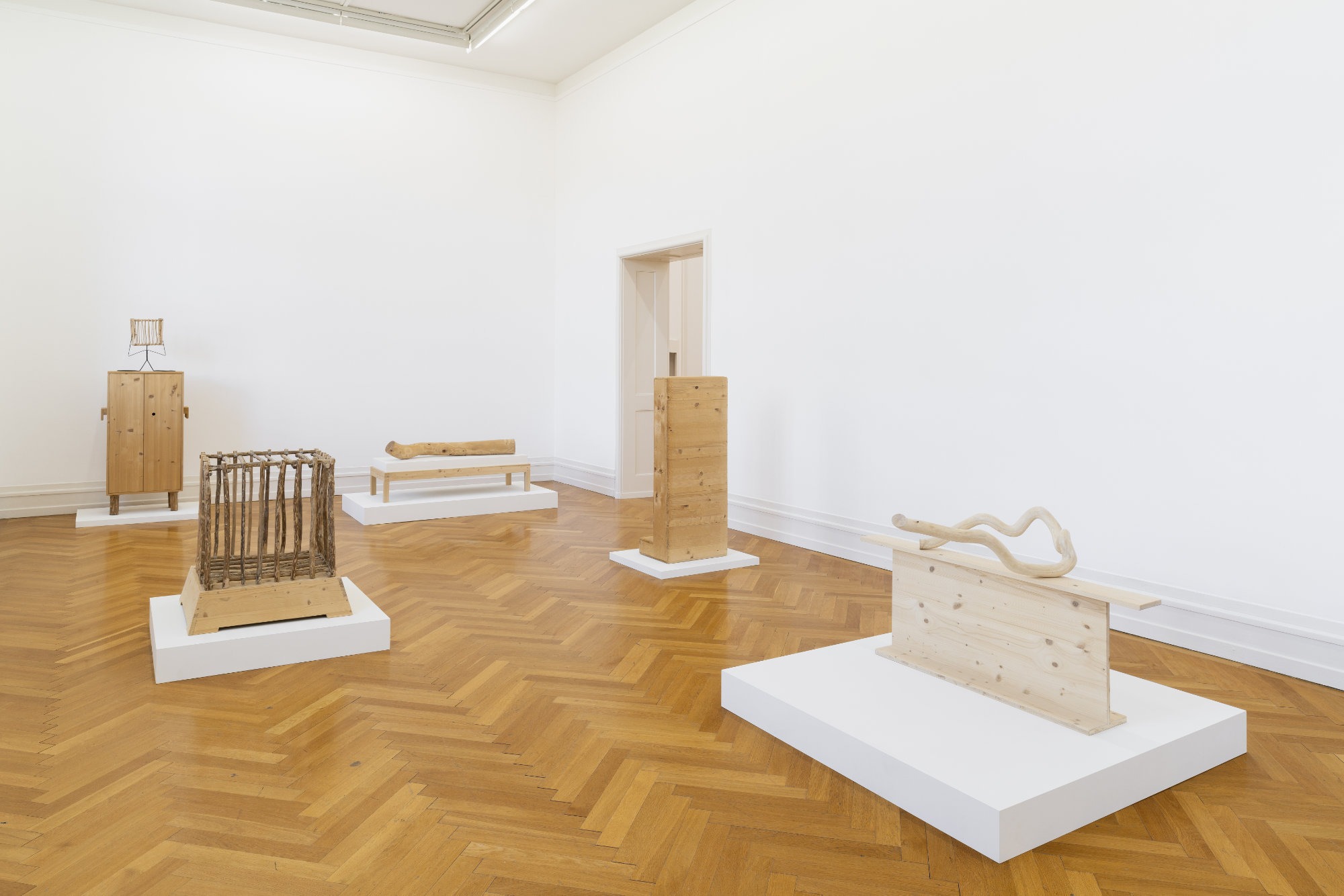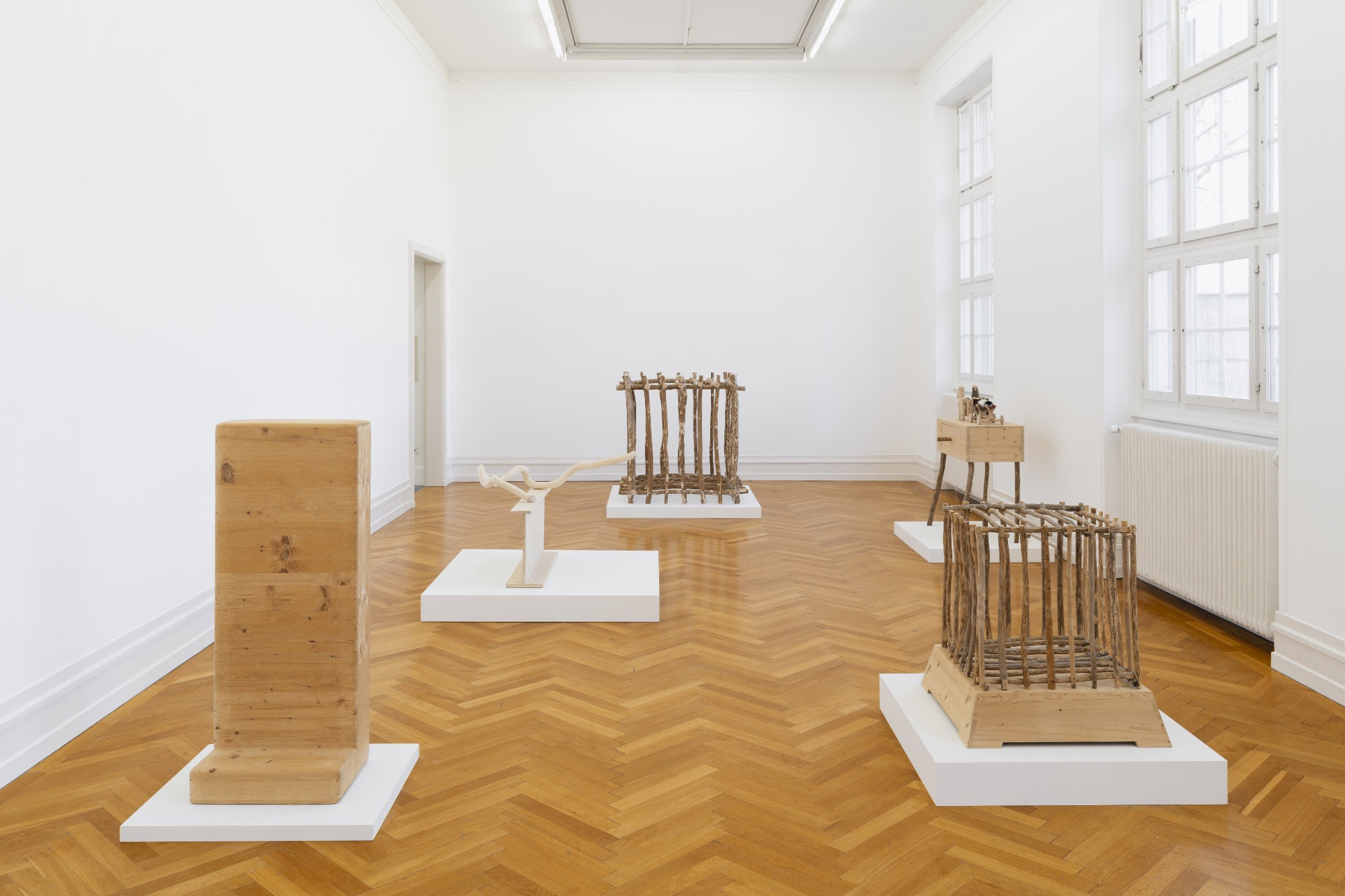Jean-Frédéric Schnyder
26 Feb - 15 May 2022
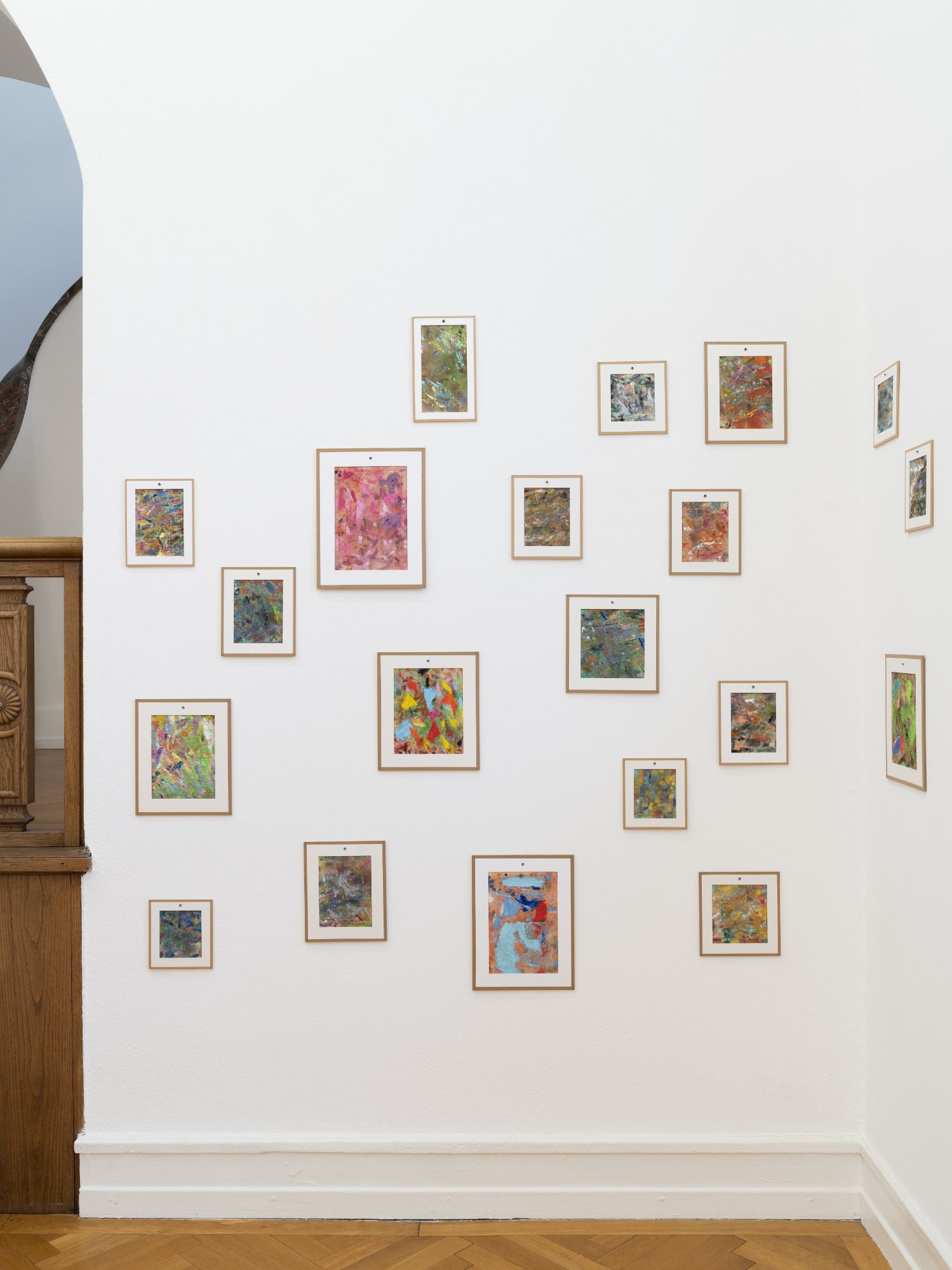
Jean-Frédéric Schnyder
Billige Bilder, 2000–2019
Oil on textile, cardboard, 162 pieces
Courtesy Galerie Eva Presenhuber Zürich / New York
Photo: Gunnar Meier
Billige Bilder, 2000–2019
Oil on textile, cardboard, 162 pieces
Courtesy Galerie Eva Presenhuber Zürich / New York
Photo: Gunnar Meier
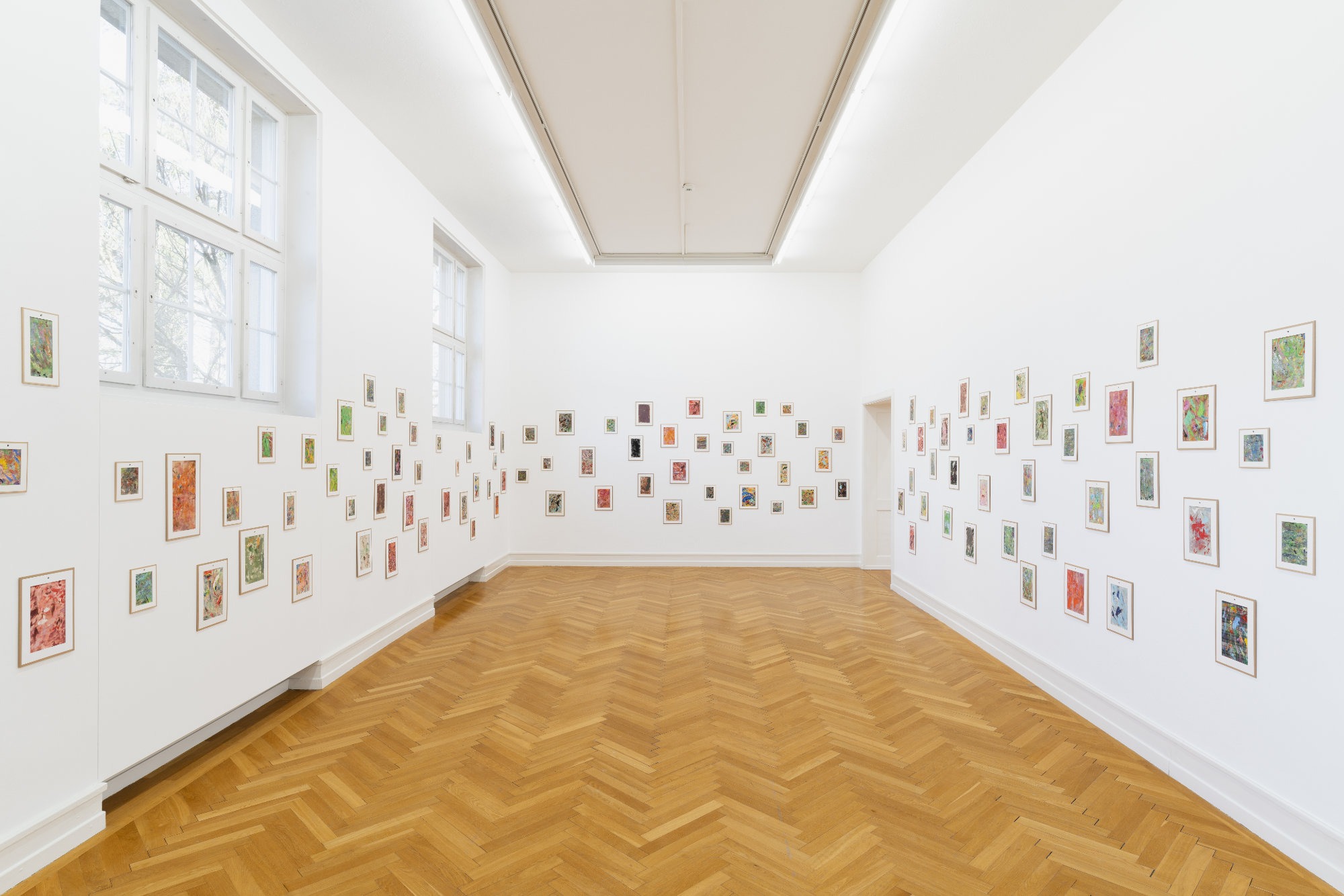
Jean-Frédéric Schnyder
Billige Bilder, 2000–2019
Oil on textile, cardboard, 162 pieces
Courtesy Galerie Eva Presenhuber Zürich / New York
Photo: Gunnar Meier
Billige Bilder, 2000–2019
Oil on textile, cardboard, 162 pieces
Courtesy Galerie Eva Presenhuber Zürich / New York
Photo: Gunnar Meier
The art of Jean-Frédéric Schnyder is derived from the things that surround him. He doesn’t have to look for long, it’s all already there. He explores, observes, contemplates. Engaging with the matter involves the crucial question of which form is fitting, which tool most suited. Schnyder likes it neat and tidy. Yet he lets things come to him, follows their course rather than some overall vision. And although he hardly wastes a thing, he does not head towards a goal sparingly. He casts nothing ahead. Already in 1969, for the exhibition Pläne und Projekte als Kunst (Plans and Projects as Art) at Kunsthalle Bern, he stated: Mein Projekt ist, keine Projekte zu machen (My project is not to make projects).
Schnyder approaches the world with openness. He concerns himself with the everyday, with what might be deemed trivial, and is thereby also accessible. He paints the printed paper bag used for greengroceries, the figure of Luigi Moretti off the label of a beer bottle, the mountain Niesen surrounded by creatures of mist, but also Christ bearing the cross. He makes paintings from brush rags, carves sticks for a cage out of hazel wood from the garden, carves crosses, a club out of the Christmas tree. He makes pictorial objects out of wood scraps, stacks wooden blocks to a miniature city, adapts paintings after other artists, paints poems.
He doesn’t judge the things he chooses to give an appearance to, everything is equally valid. This approach is so matter-of-fact that the term art could almost be relegated to the background, even if art is, actually, what we’re dealing with here – it’s also just what he does every day.
When Schnyder decided to paint in the 1970s, he had no knowledge of pencil or brush technique. Which is why a few years earlier, conceptual art seemed to be just the right thing for him: at first, you seemed to have to be able to do very little, in terms of skill at least. His becoming an artist initially had to do with a painter of veduta in town whom he had always admired. But the definitive cue came from artists like Marcel Duchamp or Walter de Maria, who had redefined what art could be and how art could be made. However, the path of conceptual art that Schnyder went down for a while, riding its wave in the 1960s, was not his after all. He found the “visualised thought processes”, at least when it came to himself, too “autistic”. He sought something that suited him more closely, that had more to do with everyday life and could convey it more directly.
So, at a time when painting was considered the abomination of art, he decided to devote himself to painting. Since he did not possess the necessary skills, he had to first acquire them. Stillleben (1970) (still life) embodies this turning point. Schnyder wanted to paint at it for as long as it took for it to look like an old master. Painted after a real arrangement and with the help of a preliminary drawing by the artist Margret Rufener, the motif appears, because of how it is placed, clumsy. But precisely for this reason it is also magical. Stillleben is the link between before and after, between objects and images, between Schnyder’s conceptual and post-conceptual approaches.
Alongside painting, he continued to make objects whose underlying dexterity and use of material place them in the realm of handicraft. Carving, salt doughs, ceramics, soldering, pewter casting. With such moves, Schnyder deliberately branched off from the zeitgeist. Precisely because he consistently went his own way, he developed a timeless art like no other. Though Schnyder left conceptual art behind him, its spirit flows through his works, not least because they are based on the principle of seriality. It is no contradiction that Schnyder, in his “love for the mediocre”, makes works that are accessible, even touching, but at the same time bear the distanced awareness of how their being so is inscribed into art history. They are also images about images and about making things. The act that lies in between unlocks a knowledge that glistens. What emerges from it is not an explanation but an almost sacred magic.
The relationship between Kunsthalle Bern and Jean-Frédéric Schnyder began as early as the 1960s. The artist, who was born in Basel and grew up in Bern, was assistant at Kunsthalle in 1967 and, from 1968 onwards, showed his work in the exhibitions 12 Environments (1968), When Attitudes Become Form (1969) and 22 junge Schweizer (1969) (22 young Swiss artists). Taking up this connection half a century later rounds it off.
Valérie Knoll, who is concluding her tenure as director of Kunsthalle Bern with this exhibition, follows on from the programme of the last seven years, which addressed the possibilities of contemporary painting. Once more, the question as to the future of painting is raised – that practice that will remain even if people should one day say goodbye to art.
Schnyder cannot be limited to painting, however. His work also includes sculpture and installation. Which is why much of the floor in this exhibition belongs to them. New, rarely or never shown works from 1970 to the present are brought together, including those that were not necessarily planned as works of art, but resulted from daily activities.
The work of Jean-Frédéric Schnyder is being honored in two simultaneous exhibitions: at Kunsthalle Bern and at Kunstmuseum Bern (4 February – 29 May, 2022). In the latter, curated by Kathleen Bühler, a selection of works from the museum’s own collection is being shown, focusing on the 1960s, 1970s and 1980s. With few exceptions, the works were donated to the collection by the gallery owner Toni Gerber.
Kunsthalle Bern would like to thank Eva Presenhuber Zurich/New York, Margret Rufener and Kunstmuseum Basel.
Schnyder approaches the world with openness. He concerns himself with the everyday, with what might be deemed trivial, and is thereby also accessible. He paints the printed paper bag used for greengroceries, the figure of Luigi Moretti off the label of a beer bottle, the mountain Niesen surrounded by creatures of mist, but also Christ bearing the cross. He makes paintings from brush rags, carves sticks for a cage out of hazel wood from the garden, carves crosses, a club out of the Christmas tree. He makes pictorial objects out of wood scraps, stacks wooden blocks to a miniature city, adapts paintings after other artists, paints poems.
He doesn’t judge the things he chooses to give an appearance to, everything is equally valid. This approach is so matter-of-fact that the term art could almost be relegated to the background, even if art is, actually, what we’re dealing with here – it’s also just what he does every day.
When Schnyder decided to paint in the 1970s, he had no knowledge of pencil or brush technique. Which is why a few years earlier, conceptual art seemed to be just the right thing for him: at first, you seemed to have to be able to do very little, in terms of skill at least. His becoming an artist initially had to do with a painter of veduta in town whom he had always admired. But the definitive cue came from artists like Marcel Duchamp or Walter de Maria, who had redefined what art could be and how art could be made. However, the path of conceptual art that Schnyder went down for a while, riding its wave in the 1960s, was not his after all. He found the “visualised thought processes”, at least when it came to himself, too “autistic”. He sought something that suited him more closely, that had more to do with everyday life and could convey it more directly.
So, at a time when painting was considered the abomination of art, he decided to devote himself to painting. Since he did not possess the necessary skills, he had to first acquire them. Stillleben (1970) (still life) embodies this turning point. Schnyder wanted to paint at it for as long as it took for it to look like an old master. Painted after a real arrangement and with the help of a preliminary drawing by the artist Margret Rufener, the motif appears, because of how it is placed, clumsy. But precisely for this reason it is also magical. Stillleben is the link between before and after, between objects and images, between Schnyder’s conceptual and post-conceptual approaches.
Alongside painting, he continued to make objects whose underlying dexterity and use of material place them in the realm of handicraft. Carving, salt doughs, ceramics, soldering, pewter casting. With such moves, Schnyder deliberately branched off from the zeitgeist. Precisely because he consistently went his own way, he developed a timeless art like no other. Though Schnyder left conceptual art behind him, its spirit flows through his works, not least because they are based on the principle of seriality. It is no contradiction that Schnyder, in his “love for the mediocre”, makes works that are accessible, even touching, but at the same time bear the distanced awareness of how their being so is inscribed into art history. They are also images about images and about making things. The act that lies in between unlocks a knowledge that glistens. What emerges from it is not an explanation but an almost sacred magic.
The relationship between Kunsthalle Bern and Jean-Frédéric Schnyder began as early as the 1960s. The artist, who was born in Basel and grew up in Bern, was assistant at Kunsthalle in 1967 and, from 1968 onwards, showed his work in the exhibitions 12 Environments (1968), When Attitudes Become Form (1969) and 22 junge Schweizer (1969) (22 young Swiss artists). Taking up this connection half a century later rounds it off.
Valérie Knoll, who is concluding her tenure as director of Kunsthalle Bern with this exhibition, follows on from the programme of the last seven years, which addressed the possibilities of contemporary painting. Once more, the question as to the future of painting is raised – that practice that will remain even if people should one day say goodbye to art.
Schnyder cannot be limited to painting, however. His work also includes sculpture and installation. Which is why much of the floor in this exhibition belongs to them. New, rarely or never shown works from 1970 to the present are brought together, including those that were not necessarily planned as works of art, but resulted from daily activities.
The work of Jean-Frédéric Schnyder is being honored in two simultaneous exhibitions: at Kunsthalle Bern and at Kunstmuseum Bern (4 February – 29 May, 2022). In the latter, curated by Kathleen Bühler, a selection of works from the museum’s own collection is being shown, focusing on the 1960s, 1970s and 1980s. With few exceptions, the works were donated to the collection by the gallery owner Toni Gerber.
Kunsthalle Bern would like to thank Eva Presenhuber Zurich/New York, Margret Rufener and Kunstmuseum Basel.

